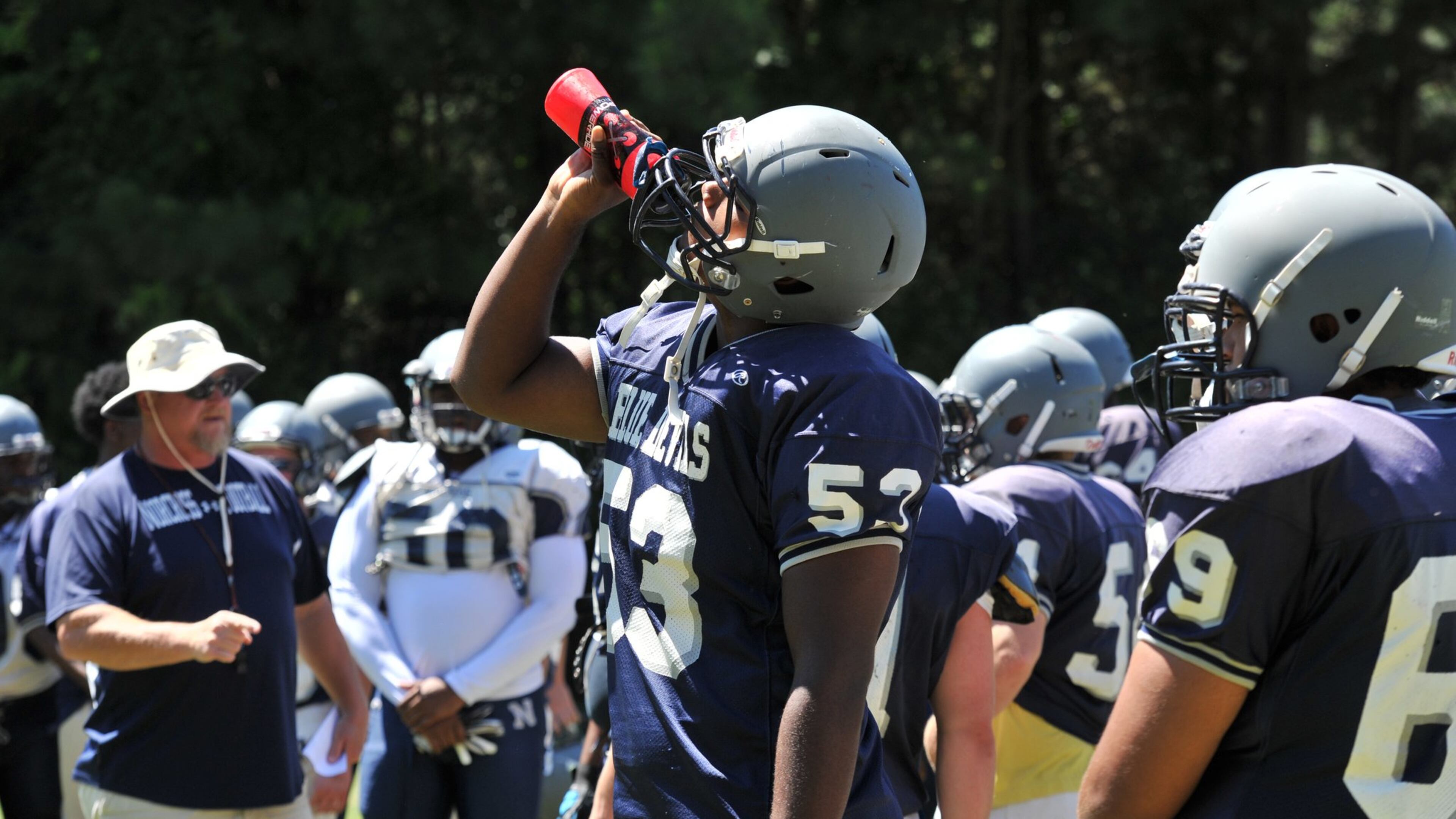Georgia ranks No. 1 in safety policies for high school athletes

Georgia ranks No. 1 nationally for policies that prevent and manage sudden death and catastrophic injury in high school sports, according to the Korey Stringer Institute at the University of Connecticut.
The organization has been reviewing state high school sports safety policies since 2017 based on high school association bylaws and state laws that address heat acclimatization, emergency plans, coaching education, athletic trainers, health care and strength-and-conditioning programs for high school athletes.
For the first time, Georgia came out on top this week. Georgia policies met 93.7% of the Stringer Institute’s criteria. The median score was 49.9%.
“Georgia does an amazing job,” said Christianne Eason, the Korey Stringer Institute’s president of sports safety and education. “They did their research, particularly in heat-illness prevention, to determine what some of the safety standards should be, and we’ve really adopted their model, especially environmental monitoring. So Georgia has been a leader in sports safety. They deserve a lot of credit for that.”
The impetus for Georgia’s rise in safety standards might be traced to 2010, not long after a UGA study found that Georgia led the nation with seven heat-related deaths among high school football players over a 20-year period.
The Georgia High School Association partnered with UGA, particularly with kinesiology professor and heat-illness authority Bud Cooper, to establish policies and guidelines to reduce the risk. In 2012, the GHSA began requiring schools to monitor wet-bulb globe temperature (WBGT) during practices. WBGT is a combined measure of air temperature, humidity, radiant heat and air movement.
Under the new guidelines, if the WBGT exceeds 92 degrees, practices must be canceled or stopped. When WBGT readings register between 82-92, practice intensity must decrease, equipment modification is required and practice duration must decrease. The guidelines also regulate the frequency of water and rest breaks, based on the WBGT reading.
The GHSA later expanded the guidelines to all sports and implemented them for the entire calendar year.
Cooper, a member of the GHSA’s sports-medicine advisory committee, determined that the incidence of heat-related illnesses fell 70% over the next three years across all sports as a result of the new policies.
Also since 2012, only one GHSA athlete in any sport has suffered a heat-related death, Cooper said.
That occurred in 2019, when Imani Bell, a junior basketball player at Elite Scholars Academy in Clayton County, died after suffering hyperthermia while running outdoor stadium steps in excessive heat against GHSA guidelines. The Clayton County school board paid a $10 million civil settlement in 2022.
Other Georgia high school athletes have died as a result of injuries or illness since 2012, but not because of heat, Cooper said. In 2021, Southwest-Macon football player Joshua Ivory Jr. died after collapsing during a preseason practice. His death was ruled the result of an abnormal heart rhythm.
Catastrophic injuries also do occur. During the 2024-25 academic year, Bremen football player Carson Kimball and Jefferson wrestler Dominic Haines suffered severe spinal injuries and partial paralysis during competitions.
The Korey Stringer Institute’s criteria do not consider statistics on injuries or death, just the regulations in place to prevent them. In those, the GHSA shines, meeting requirements for heat acclimation, exertional heat stroke, WBGT, defibrillators, concussions and health-care coverage.
Georgia met only 57% of the Stringer Institute’s rubrics in the original 2017 report, which came in the first year in office of former executive director Robin Hines, who made safety and the Stringer rankings a priority, if not an obsession.
“Our ultimate goal is the safety of athletes, but at the same time, we’re also competitive, and if there’s a list, we want to be at the top,” Hines said.
Since 2017, the GHSA has used the Stringer guidelines as a checklist to further upgrade its safety bylaws. In recent years, the GHSA has expanded its guidelines to include games in addition to all practices. Starting in 2024, the GHSA began requiring that schools have a cold-water immersion tub on site if the wet-bulb globe temperature exceeds 86 degrees.
Hines said that getting a 100% score probably is unrealistic. The Stringer guidelines call for a health-care professional to be on site for all collision/contact practices and competitions. Hines said many GHSA schools and school systems cannot afford that expense.
Hines and his successor Tim Scott, who took over in 2024, gave much of the credit to Cooper and to the GHSA’s sports-medicine advisory committee headed by Don Corr.
Cooper said that finishing first in the rankings felt a little like a sports victory.
“We’ve worked really hard at improving Georgia’s ranking, and after trailing the state of Florida, we finally came out on top,” he said.
Said Scott, “I’m incredibly excited that Georgia has been ranked No. 1. It’s a testament to our state’s commitment to putting athlete safety first and to our sports-medicine committee and member schools for the work they’ve done to make this possible.”
The Stringer Institute was founded in 2010 by the wife of Korey Stringer, a Minnesota Vikings offensive lineman who died from exertional heat stroke in 2001.


